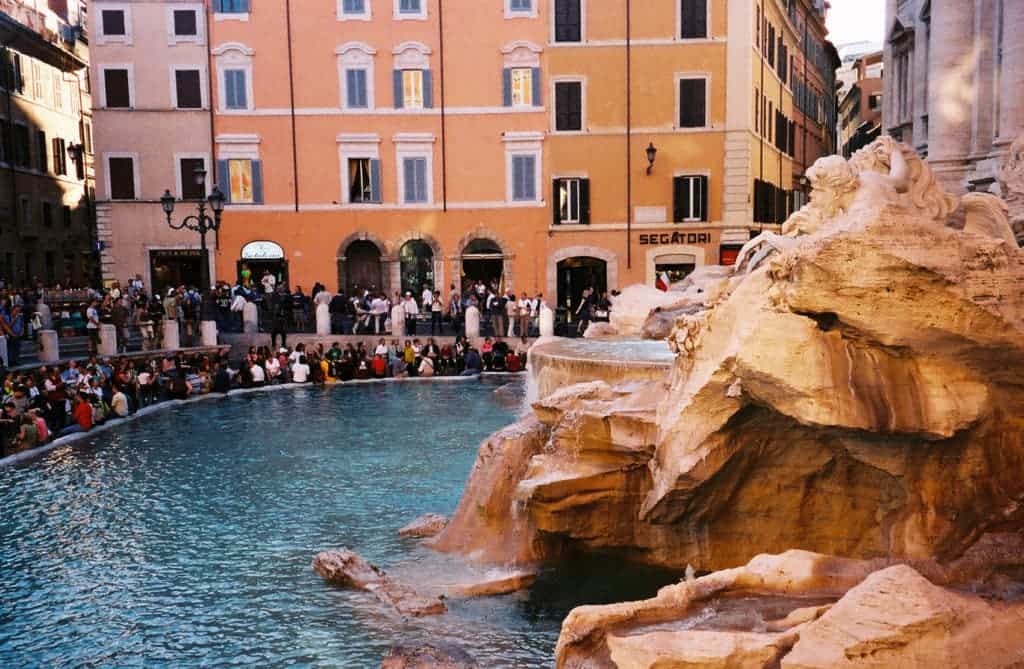When visiting Rome, any of the 20 million tourists that arrive every year is probably expecting monumental sites, breathtaking artwork and tasty food, among many other things. But, the Eternal City also welcomes visitors with some more unexpected sights.

Dumpsters overflowing with trash, rats and seagulls foraging through garbage bags and wild boars attracted by trash are now a common scene on the streets of Rome, as part of its never-ending garbage crisis that has turned the city into what many describe as an open-air dump.
But, the problem isn’t actually new, despite only now reaching the media.
Rome’s difficult relationship with trash is decades-long and starts with “a big black hole,” which is what locals used to call the Malagrotta landfill. It was once the largest in Europe and the only site devoted to the city’s garbage disposal for about 30 years, until it was closed in 2013.
Since then, the city has been left with no major site to dump or treat the 1.7 million metric tons of trash it produces every year, and no real strategy for recycling, as successive mayors from different parties all proved incapable of solving the waste emergency.
Trash Pileup In Rome Rots In Summer Hot Spell : NPR https://t.co/7RUQThNJ3d pic.twitter.com/5CTxThwukW
— csbnnews (@csbnnews) July 18, 2019
And money isn’t the problem. The city spent more than 597 euros (US$670) per inhabitant on household waste treatment in 2017 — by far the highest in the country, ahead of Venice (US$353 euros) and Florence (US$266 euros), according to a report by the Openpolis Foundation.
Now, most of Rome’s garbage is shipped to other Italian regions or even abroad. Only 40% gets collected separately and recycled. The capital exports 1.2 million tons of its garbage every year, at a cost of 180 million euros (US$206 million). The remaining half-million tons sits uncollected for weeks.
Doctors in Rome are warning of possible health hazards caused by overflowing trash bins in the city's streets. Rome’s image is being tarnished for tourists, and residents are angry. How did this decades-old problem start, and how can it be solved? #Wast https://t.co/yskj5IZ4AW pic.twitter.com/Ky49HiKFeQ
— Jason Rumsey (@JRumZ10) July 17, 2019
Virgina Raggi, a 30-year old lawyer, was elected as mayor in 2016, vowing to solve the crisis. After almost three years in office, her promises are far from being fulfilled, leading to frequent protests by both citizens and tourists that can’t simply stand the smell.
Raggi’s plan contemplated the gradual expansion of door-to-door waste collection from a few neighborhoods to the whole city, with the target of 70% of waste collected separately for recycling by 2021. But the ambition felt through, with separate collection now stuck at 44%
The sites that were supposed to replace the Malagrotta landfill never became operational, as they faced staunch opposition by local residents and mayors. AMA, the city-owned company in charge of collecting Rome’s garbage, recently proposed to build 13 new facilities, which would help quite a lot.
Eternally smelly metropolis? Rats feast on rubbish in Rome as trash disaster sparks well being fears – NEWPAPER24 https://t.co/TVlz8y1FaB pic.twitter.com/WAzimsUFlt
— Newpaper24 (@newpaper24) July 13, 2019
But there’s a catch. AMA has about 600 million euros in debt and some of its former managers are being investigated, along with dozens of local officials, for allegedly teaming up to rig bids for city contracts. So moving forward with the new facilities isn’t as easy as it seems.
This means that despite money, politics and complaints, the smelly trash is here so stay, at least for the short term.


